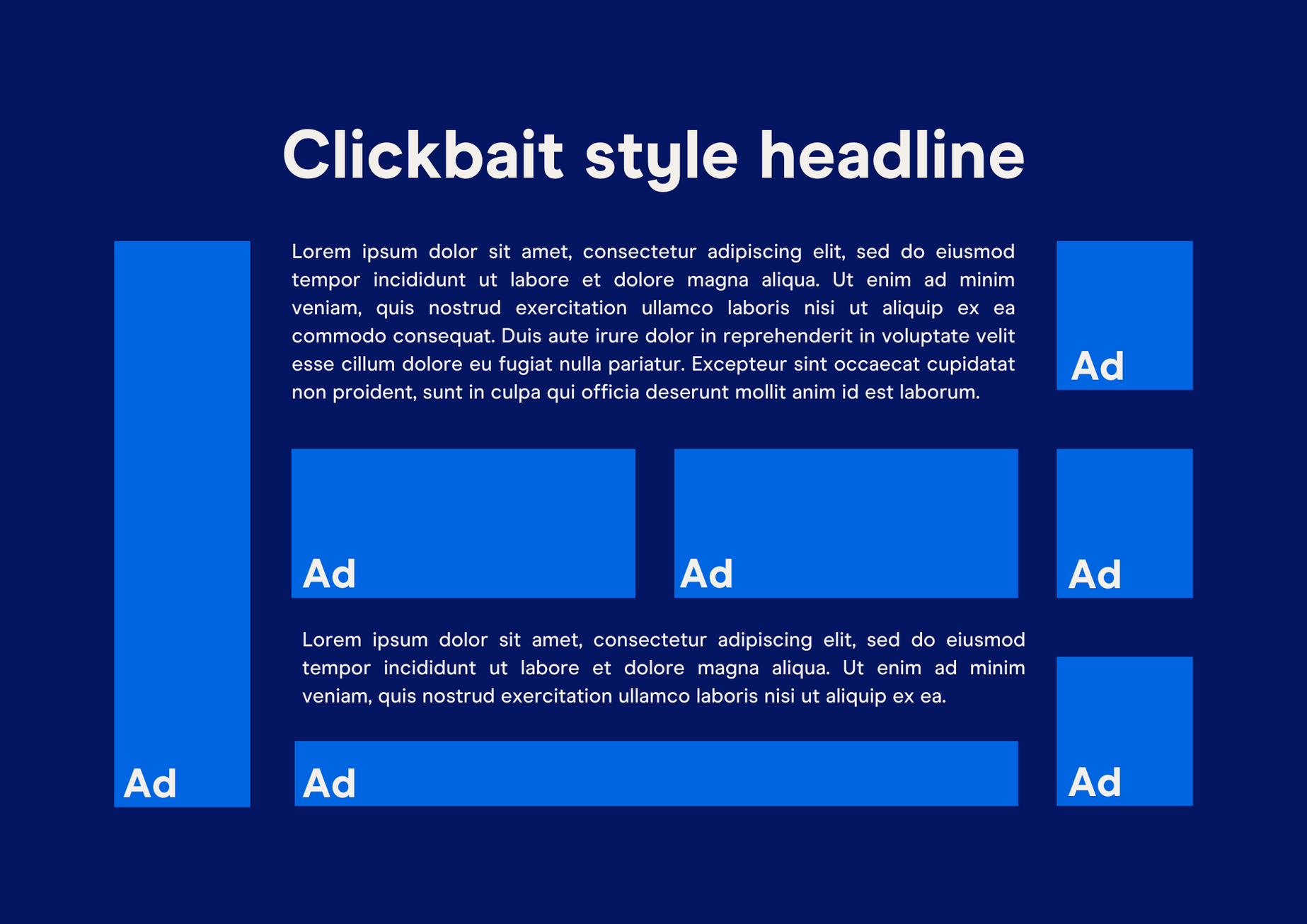A guide to identifying Made for Advertising websites
Posted on Monday 17 July 2023 | IAB UK
This guide explains the risks of Made for Advertising (MFA) websites and details their common characteristics to help you avoid placing ads on them
Made for Advertising websites (MFAs) are concerning to the whole digital advertising industry. MFAs are designed to maximise the number of ads that users are exposed to by including lots of ads on each page and manipulating user journeys so that visitors must click through multiple pages to access content. Because of these characteristics, they offer poor usability for visitors and focus on ad revenue over experience. Prioritising revenue in this way damages the reputation of digital advertising. In a recent study from the ANA, it was found that 21% of impressions served were on MFA sites, an alarming figure.
Currently, there is no single agreed upon definition for MFA websites and therefore it can be difficult to identify and exclude them from media plans. However, there are some common characteristics of MFA sites that can help you avoid placing your ads on them
-
Ad placement and density: Made for Advertising sites tend to have excessive ad placements and a high density of ads on their pages. Ads may overshadow or disrupt the user experience, evidence that the primary focus of the site is generating ad revenue rather than providing valuable content. Ad formats can include pop-ups, intrusive ads, overlays and misleading ad placement, all placed around clickbait style headlines and content. Many of these attributes in creative formats breach Coalition for Better Ads standards. And as noted in IAB UK’s Rules of Attention research, increased clutter will reduce the impact and effectiveness of advertising. The study found that one or two ads per screen commanded more than double the attention of three plus ads.

Example of ad placement on an MFA
-
Quality and relevance of content: Made for Advertising sites often lack high-quality, professionally produced content. They may have a generic layout, poor design and non-specific articles with little substance. Assessing the overall quality and relevance of a website can help identify potential MFA sites.
-
Traffic Patterns: Sudden spikes of traffic to a new site can be concerning, especially when this is inorganic traffic, at specific points in the day or without any clear explanation. Any combination of these factors suggests traffic being generated artificially to inflate page views.
-
Navigation and user journey: Made for Advertising sites will often have unusual navigation and user journeys in order to maximise ad exposure. For example, they may tempt users to view ‘20 actors from the nineties, you won’t believe what number 17 looks like now!’ The content for an article like this will be laid out with one actor per page, so the user must click through 17 pages, being exposed to multiple ads on each page of the journey.
A combination of the above attributes can help identify a Made for Advertising site. Some of these characteristics can be identified by ad verification tools, but avoiding advertising on MFAs also requires rigour in the identification of preferred suppliers. This can be aided by adoption of best practices in measurement (more information can be found in IAB UK’s Measurement Toolkit.)
By employing these strategies to identify MFAs, the industry can reduce the risks associated with MFA sites and make informed decisions about where to allocate ad spend. It is essential to partner with reputable publishers who prioritize user experience, transparency and genuine engagement to ensure the effectiveness and integrity of digital advertising campaigns.
The rise of Made for Advertising websites can present significant challenges. These sites manipulate metrics, reduce the impact of ad spend and compromise the effectiveness of digital advertising. Advertisers need to be vigilant, assess website quality, and rely on transparency tools and verification tools to identify and avoid MFA sites.
Written by
IAB UK
Related content
A day at WACL’s Festival of Talent
Learn moreVisiting us
Learn moreJoy of Digital Award: OVO Energy’s ‘power nap’ with Amazon Alexa
Learn moreLord Lucas introduces IAB amendments to the DPDI Bill in the House of Lords
Learn more
Rediscover the joy of digital advertising
Champion connections instead of clicks. Capture audiences' imaginations, not just their attention. Boldly move to your own beat instead of letting tech set the pace. It’s time to rediscover the joy of digital.



